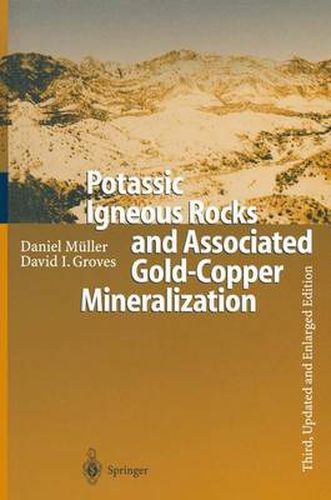Readings Newsletter
Become a Readings Member to make your shopping experience even easier.
Sign in or sign up for free!
You’re not far away from qualifying for FREE standard shipping within Australia
You’ve qualified for FREE standard shipping within Australia
The cart is loading…






This title is printed to order. This book may have been self-published. If so, we cannot guarantee the quality of the content. In the main most books will have gone through the editing process however some may not. We therefore suggest that you be aware of this before ordering this book. If in doubt check either the author or publisher’s details as we are unable to accept any returns unless they are faulty. Please contact us if you have any questions.
In recent years, there has been increasing interest from geoscientists in potassic ig- neous rocks. Academic geoscientists have been interested in their petrogenesis and their potential value in defining the tectonic setting of the terranes into which they were intruded, and exploration geoscientists have become increasingly interested in the association of these rocks with major epithermal gold and porphyry gold-copper deposits. Despite this current interest, there is no comprehensive textbook that deals with these aspects of potassic igneous rocks. This book redresses this situation by elucidating the characteristic features of po- tassic (high-K) igneous rocks, erecting a hierarchical scheme that alIows interpreta- tion of their tectonic setting using whole-rock geochemistry, and investigating their associations with a variety of gold and copper-gold deposits, worldwide. About half of the book is based on a PhD thesis by Dr Daniel MillIer which was produced at the Centre for Strategic Mineral Deposits (former ARC Key Centre) within the Depart- ment of Geology and Geophysics at The University of Western Australia under the supervision of Professor David Groves, the late Dr Nick Rock, Professor Eugen Stumpf}, Dr Wayne Taylor, and Dr Brendan Griffin. The remainder of the book was compiled from the literature using the collective experience of the two authors. The book is dedicated to the memory of Dr Rock who initiated the research project but died before its completion.
$9.00 standard shipping within Australia
FREE standard shipping within Australia for orders over $100.00
Express & International shipping calculated at checkout
This title is printed to order. This book may have been self-published. If so, we cannot guarantee the quality of the content. In the main most books will have gone through the editing process however some may not. We therefore suggest that you be aware of this before ordering this book. If in doubt check either the author or publisher’s details as we are unable to accept any returns unless they are faulty. Please contact us if you have any questions.
In recent years, there has been increasing interest from geoscientists in potassic ig- neous rocks. Academic geoscientists have been interested in their petrogenesis and their potential value in defining the tectonic setting of the terranes into which they were intruded, and exploration geoscientists have become increasingly interested in the association of these rocks with major epithermal gold and porphyry gold-copper deposits. Despite this current interest, there is no comprehensive textbook that deals with these aspects of potassic igneous rocks. This book redresses this situation by elucidating the characteristic features of po- tassic (high-K) igneous rocks, erecting a hierarchical scheme that alIows interpreta- tion of their tectonic setting using whole-rock geochemistry, and investigating their associations with a variety of gold and copper-gold deposits, worldwide. About half of the book is based on a PhD thesis by Dr Daniel MillIer which was produced at the Centre for Strategic Mineral Deposits (former ARC Key Centre) within the Depart- ment of Geology and Geophysics at The University of Western Australia under the supervision of Professor David Groves, the late Dr Nick Rock, Professor Eugen Stumpf}, Dr Wayne Taylor, and Dr Brendan Griffin. The remainder of the book was compiled from the literature using the collective experience of the two authors. The book is dedicated to the memory of Dr Rock who initiated the research project but died before its completion.